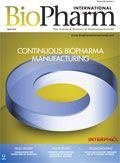Welcome to the Biosimilar Era
FDA approves a biosimilar and loses a commissioner in March.
Approvals of most generic drugs receive little fanfare. FDA’s approval of the first US biosimilar product-Zarxio (filgrastim-sndz) from Sandoz-in March, however, garnered a wealth of media and public attention. A biosimilar to Amgen’s Neupogen (filgrastim), which was originally licensed in 1991, Zarxio is approved for the same indications as Neupogen and may be prescribed by a healthcare provider for patients undergoing cancer treatments or those with neutropenia.
The approval of the first biosimilar comes five years after the enabling legislation, the Biologics Price Competition and Innovation Act of 2009, was passed as part of the Affordable Care Act that was signed into law in March 2010.
Janet Woodcock, director of the Center for Drug Evaluation and Research (CDER) described the Zarxio approval as “a significant milestone in FDA’s regulatory history” (1). She noted that the initial approval paved the way for future biosimilar approvals, and a successful review process could provide more affordable treatments to patients and spur development of a new segment of the biotechnology industry.
The approval marked a turning point for the biopharmaceutical industry; however, it also is an indicator of how the United States lags the rest of the world in biosimilar development and use. Regulatory pathways for biosimilar approval have been established in other parts of the world for some time. The Zarxio approval comes nearly a decade after the first biosimilar drug was approved in Europe; in fact, biosimilar filgrastim is available in more than 60 countries worldwide.
Questions about the development and acceptance of biosimilar drugs remain:
- On the patient level, the decision to switch from a branded biologic to a biosimilar is up to the prescriber; however, the potential for immunogenicity due to the change in biologic product is a concern.
- Analytical studies to evaluate similarity can be challenging and applications must have sufficient analytical data.
- The naming convention for biosimilar products is a hot topic for manufacturers and healthcare providers. While FDA works on draft guidance for the naming of biosimilars, a placeholder nonproprietary name-filgrastim-sndz-is used to identify the product. A guidance document for biosimilar labeling is also in the works.
While Sandoz has a green light from FDA to move forward with Zarxio, pending legal action threatened to delay the market release in early April.
While March marked a new beginning for FDA with the biosimilar approval, it also marked the end of the six-year tenure of Margaret Hamburg as FDA commissioner.
When Hamburg announced that she was stepping down in February, the news generally was met with praise for FDA accomplishments during her tenure including an increased emphasis on science-based regulation, efforts to streamline product approvals, and addressing challenges of operating in a globalized drug market. Addressing the unresolved and unknown challenges in the biosimilar era--along with many other issues facing FDA--will be left to the next FDA commissioner.
I would like to thank Dr. Hamburg for her service and urge the President and Senate to act swiftly to appoint and approve a successor.
Reference
1. J. Woodcock, CDER Center Director e-mail, March 6, 2015.
Article Details
BioPharm International
Vol. 28, Issue 4
Page: 6
Citation: When referring to this article, please cite as R. Peters, “Welcome to the Biosimilar Era,” BioPharm International 28(4) 2015.

Teva and Samsung Bioepis Launch Biosimilar Eculizumab in US Market
April 17th 2025Eculizumab-aagh (EPYSQLI) is now available in the US to treat patients living with difficult-to-treat rare diseases such as paroxysmal nocturnal hemoglobinuria, atypical hemolytic uremic syndrome, and generalized myasthenia gravis.